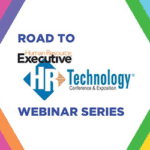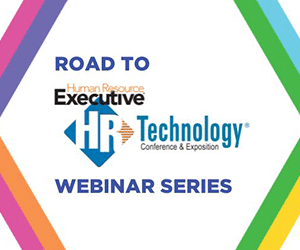Retirement benefits, along with medical benefits, are rated as important considerations when candidates are evaluating a new job offer. So, it’s striking to learn that a majority of employees don’t necessarily believe a retirement benefit will deliver on its promise—providing them with the ability to save enough over their career to afford a secure retirement.
We recently conducted a survey of employers’ and employees’ attitudes toward their retirement benefits, which showed that 91% of employers felt their DC plan was competitive, but 61% of employees thought they could get better retirement benefits somewhere else. Only 27% of employees surveyed said they definitely feel confident that they’ll save enough to cover their expenses in retirement. Employees cited a few factors that get in the way, with living costs (today’s expenses) and debt (yesterday’s expenses) as the two most significant factors.
This raises two questions: How can you increase employee satisfaction with the retirement benefits offered by your organization, and what steps can you take in 2024 to help your employees save enough in their defined contribution plan so they can have a secure retirement?
See also: Are pension plans making a comeback?
Taking the pulse
To address these issues, it’s important to understand the employees at your organization. A good place to start is by looking at the data and your recordkeeper reports.
For example, the pause on repayments for federal student loans ended in October. As you look at reporting since then, keep an eye out for trends in decreasing contribution rates and consider what you can do to reach those folks. A good way to spot trends early on is by taking a close look at any questions that come in via email or chatbot, as well as those to a call center.
The second approach is direct listening. You could survey employees about their feelings about retirement by including a few questions in an existing survey or conducting a survey strictly about retirement benefits. Either way, you’ll get some first-hand insights about your population.
Pulse surveys are a great way to get input quickly from a particular audience segment. Focus groups can help you take a deep dive to understand the more nuanced thoughts that underlie survey responses. And finally, games or quizzes are additional ways to identify the concepts employees might have difficulty grasping.
Listening activities are also the perfect opportunity to ask your employees how they prefer to receive information.
Tackling obstacles to understanding and saving
Armed with insights from monitoring and employee listening activities, you can refine your communication and education strategy to help drive behavior in support of your carefully designed DC retirement plan. Here are a few common obstacles and ideas for driving the action you wish to see.
“I didn’t see the message.”
Overcoming that challenge is the first step. How can you break through the noise? Using multiple channels, including ones your employees prefer, will help reach a wider range of people. Humor and attention-getting graphic design can go a long way.
Try leveraging employee resource groups as a channel. Specific communications like LBGTQ+ benefits guides can help reach folks with unique needs.
“I don’t understand the information.”
This is an opportunity to go back to basics and key concepts. Retirement for employees today is unlikely to look like the retirement their grandparents might have had. For many, there’s no pension check that comes every month that, together with Social Security, covers everything.
Employees might not have any models for what a self-funded retirement looks like. That’s where employer-provided education can come in to fill the gaps.
“I don’t understand” is an opportunity to review messages for readability and use of plain language. Are messages not only accurate but also easy to understand? Are bilingual service representatives available, and are messages available in languages other than English?
Learn how to leverage organizational culture to boost retirement communication at the upcoming EPIC Conference, April 24-26, in Las Vegas. Click here to register.
“I don’t have time.”
Consider how to present information quickly, perhaps in tiny micro-learning modules or as a podcast for on-the-go learning about saving and budgeting. Make it mobile and quick to access because cutting down on the time it takes to find the right tool matters.
“I need the money now.”
Some plan design strategies can help overcome this hurdle, from auto enrollment and auto escalation to new SECURE 2.0 provisions, including student loan matching and emergency savings. The last two are important because they present a path to balancing today’s needs with tomorrow’s needs.
The message for employees here is that while “future you” receives the benefit of retirement savings, “today’s you” is the one who needs to take action. That’s up to 40 years of delayed gratification, which is a lot to ask. In order for any approach to work, today’s employee needs to get to know and have empathy for what they’ll be like in the future.
There are “aging filters” that are all over the internet that give a glimpse of what “future you” could look like, making it a tool to consider leveraging in some way. While this might sound unusual, it could prompt people to at least think about their future in more concrete terms.
See also: 11 numbers to know in 2024, starting with FSAs, 401(k)s
Some other ways to work on overcoming the challenge of “I need the money now” fall outside of your retirement plan. Look at your organization’s compensation philosophy and career development programs. Financial wellbeing programs, including things like financial coaching, education about budgeting and managing day-to-day finances, along with personal loan programs, can help employees gain confidence in their abilities and start thinking about the future. To that end, it’s important to make sure employees are aware of the resources you offer.
“I’ll never have enough.”
It’s difficult to work toward a vague goal. This is where personalized information and modeling tools can help employees see how they’re doing.
“It’s not urgent; there isn’t a deadline,” and “I’ve never heard of the plan.”
This is where open enrollment communications for health benefits have a big advantage over retirement messages. There’s a clear deadline and, often, a significant and immediate consequence for not taking timely action.
Career-round communication
What I’ll call “career-round” communication can help HR reach employees with relevant messages based on where they are. As the 40 years of delayed gratification whittle down, messages can shift to a focus on how to turn an account balance into income after paychecks end. When you’re distributing required information, say, about fee disclosures, consider pairing it with a reminder about available planning tools or other resources you have or can offer.
As 2024 gets underway, make a New Year’s resolution to commit to taking advantage of every opportunity to remind employees about their retirement benefits. HR has an important role in driving a culture where employees balance their focus on meeting today’s needs and planning for a secure financial future.
The post Retirement plan communication: Reach them where they are appeared first on HR Executive.






